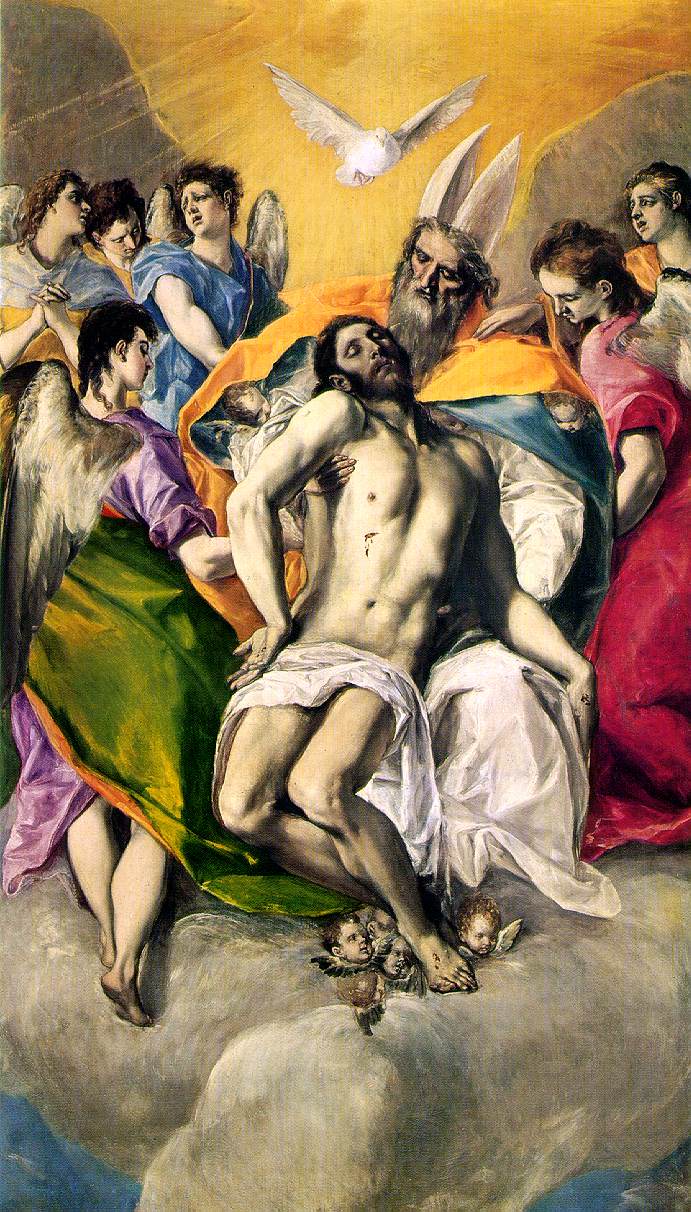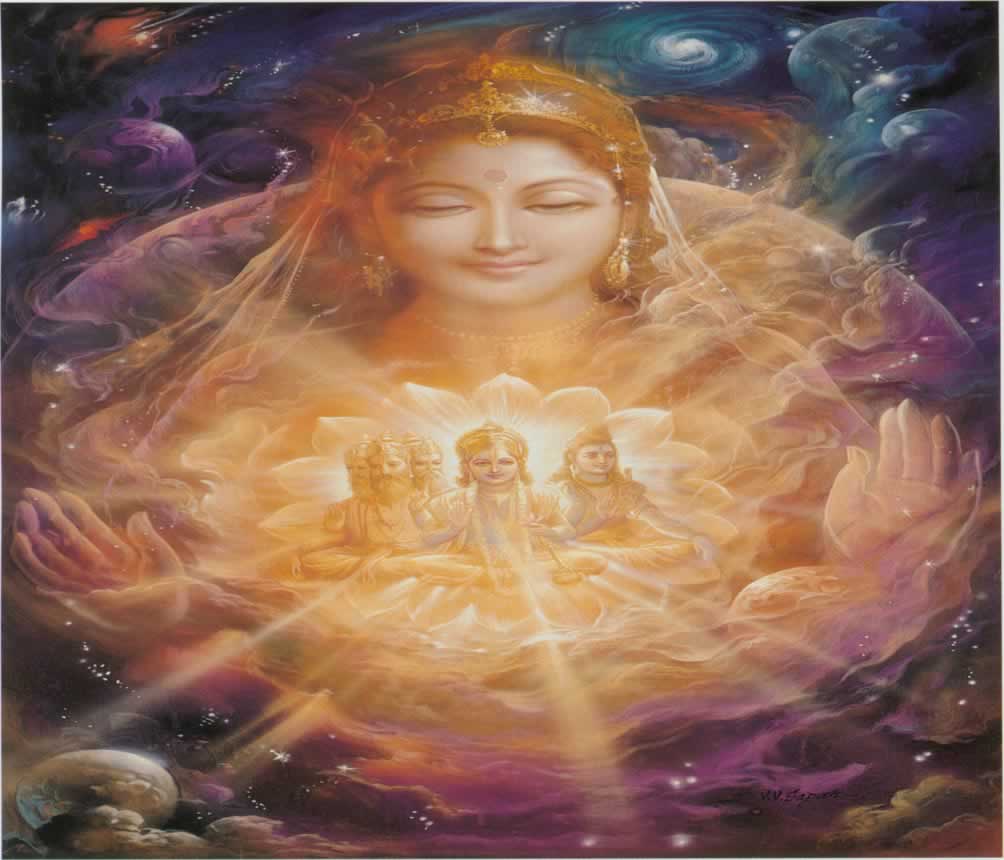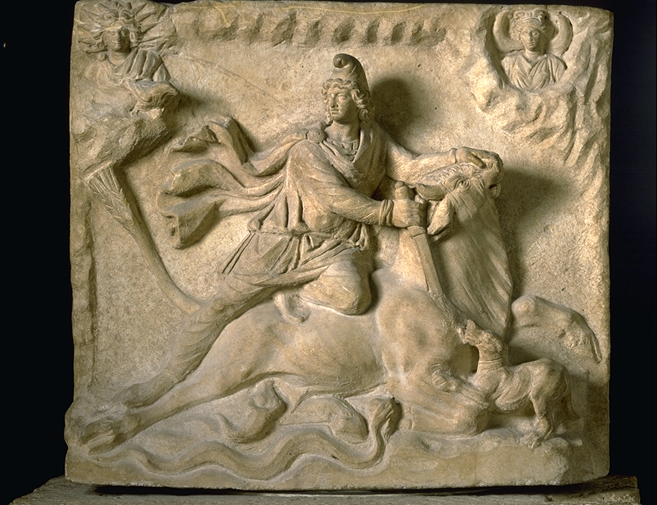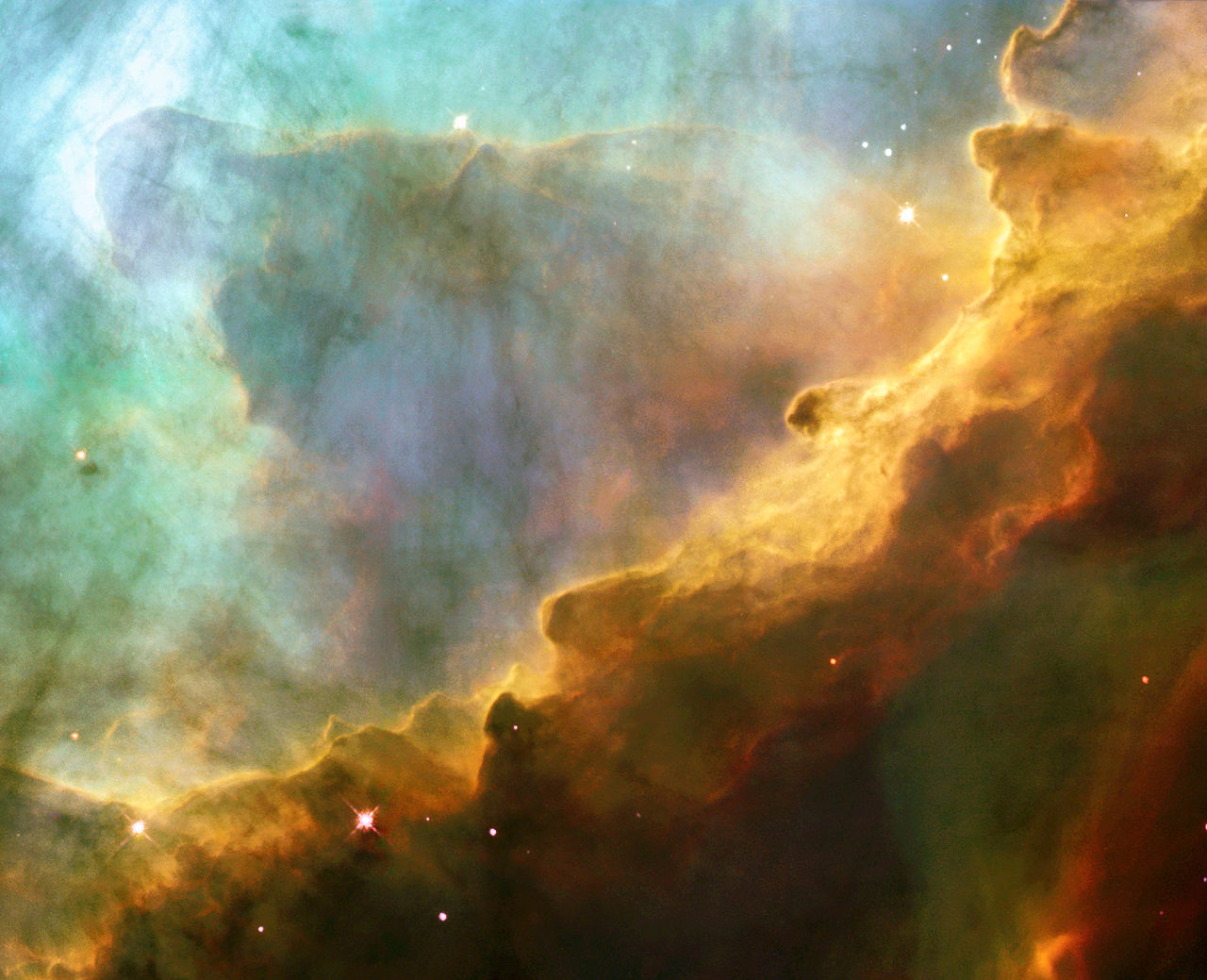Evolution of Christianity The Trinity
 |
The Trinity, by El Greco, 1577, Museo del Prado, Madrid, Spain. We can feel the emotion of Christ, Christ the Savior. The art critic uses the term pathos to describe a feeling of suffering, pity and compassion visible in the painting of “The Trinity” by El Greco. We can feel the pathos and empathy of the Father and the Son. We can feel the awe and power of these spiritual matters. We can feel the presence of the Holy Spirit. It is part of our consciousness. And not just “Christians”, but this spiritual awareness is a human condition. What then, is the nature of God? |
|---|
There is also a trinity in the Hindu religion. Hinduism is a very old and complicated belief system. The concept of Trimurti (Trinity) developed over many centuries from old Vedic legends and epics.
Brahman the Supreme Being or Universal Mother with the Hindu Trinity: Brahma, Vishnu and Shiva.
Brahma - the Creator,
Vishnu - the preserver and
Shiva - the destroyer
They came to represent three characteristics of Brahman the Supreme Being. Krishna, was one of Vishnu’s incarnations and is the sometimes referred to as the incarnation of love and the one who destroyed evil. The similarity of the names Krishna and Christ is intriguing.

Brahman has two aspects, transcendent (impersonal) and immanent (personal). In the impersonal aspect Brahman is without attributes, both formless and with form. In the personal aspect the Brahman (God) is creator, preserver and controller of the universe. The Supreme Reality (Brahman) becomes manifest or known in various aspects and forms, and is known by many names. This leads to much confusion, but the hundreds of different gods and goddesses of Hinduism represent various functions of the Supreme Being and are not really separate gods.
Dualism ~ Light and Dark
Mithra Sacrifices a Bull, stone relief, Louvre Museum, Paris |
 |
|---|
Mithra was born December 25th of a virgin. Winter Solstice was a very large and important festival in the ancient world. Various sun gods were worshipped during that time of the year as the sun began its apparent change in the sky and the length of daylight began its annual increase.
Mithra was a sun god and god of light. He was associated with religions in Persia, India, Greece and Rome, and may have began as a solar deity and son of god Ahura Mazda, the Persian god and creator of the universe. The theme of light and darkness was important in Zoroastrian religions. In Rome, Mithra was associated with a bull and was a common religion with Roman soldiers.
Gods of Fertility and Rebirth ~
 |
|---|
| The Awakening of Adonis, by John William Waterhouse, 1900, Private Collection. |
Adonis in Greek mythology was the god of beauty and desire. Adonis originally was a Phoenician (current day Lebanon) god of fertility representing the spirit of vegetation. Virgin births were common in ancient mythology. And dying and resurrection was a common theme, usually associated with fertility cults and with the Spring revival of nature. Some of these were:
Osiris and Isis in Egypt,
Baal and Ashtoreth in Caanan and Phoenicia,
Tammuz and Ishtar in Babylon,
Attis and Magna Mater (Great Mother) in Asia Minor (Turkey),
Adonis and Astarte in Syria,
Adonis and Aphrodite in Greece and
Adonis and Venus in Rome
There are many such stories and legends, but it is not our ability to determine the truth of these, only to say that there are interesting speculations and similarities to the Christian legend. For example, the word “Adonai” is a title for God used by Hebrews, and is a pronunciation of YHWH, Yahweh. Adonis and Adonai both appear to have been derived from “adon” an ancient Semite word meaning lord.
Christianity evolved from Judaism and also from Greek philosophy and paganism. Jews were perhaps less philosophical and needed only to know the Law and the Will of God. Jesus took the basics of Jewish law and teachings and molded it into a new focus - the Beatitudes and the Lord’s Prayer. Greeks were curious (science, logic, geometry) and desired to know the nature of nature and the nature of God. John, the Gospel writer, used Greek metaphysics to express his view of the Word (logos). The Christian Church absorbed various pagan traditions and festivals and turned them into Christmas and Easter and adopted the concepts of Son of God and rebirth and resurrection.
Greeks philosophers had concepts of the triune nature of man - a trinity of body, mind and soul. They termed God as the First Cause and Unmoved Mover. The Greek philosopher, Plato, rejected the anthropomorphic characteristics of God, and viewed the the gods of Homer as allegories.
The Greeks and Romans had pagan deities derived from Egypt, Babylon and other cultures. Dionysus, (Bacchus in Rome) was another son of Zeus and a fertility god and god of wine. His legend includes a virgin birth, death and rebirth.
The Next Reformation should recognize the Jewish, Greek and Pagan influence on Christianity.
The Virgin birth is not critical to the theology of the Next Reformation -
the principles of Christ Consciousness will stand alone.
God is bigger than our known universe and smaller than theoretical quantum particles. God is apparently unknowable, except in all but the smallest ways for us, as our methods are limited by our consciousness and the nature of light energy. And God in part, is related to our own archetypes that reside in our own inner concsiousness and in the bigger collective unconscious.
God is probably not the personal God of Jewish and Christian theology, but more part of our own inner consciousness. “God” is most likely beyond our comprehension. And most likely, we have created God in our image. Anthropomorphic is the term to describe this - giving human form to a thing or deity.
More Evolution of Christianity ~ Church Fathers, Constantine and the Nicean Creed


